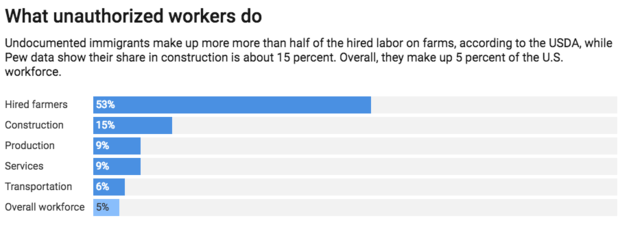Is Mandatory E-Verify on the Horizon?
By Jennifer Pawlak
In the greater discussion of the benefits or pitfalls of E-Verify, the elephant in the room is our economy’s reliance on undocumented workers. Regardless of your opinion on the subject, everyone knows that there are unauthorized workers working on farms and construction sites, in hotels and restaurants, and many other places. As (I hope) you know, the I-9 was established in 1986 by the Immigration Reform and Control Act to stop the employment of unauthorized workers and penalize employers for same. A few decades later, E-Verify was established as an add-on to make it easier for U.S. employers to nearly instantly confirm that they are hiring authorized workers. And yet, an estimated 7.6 million unauthorized immigrants are working in the U.S. (as of 2017, according to Pew Research).
You may recall from my first post on the topic that E-Verify is largely voluntary. Some states and municipalities require it for all employers, and it is required for all federal contractors. But that’s basically it. Why then was there so much work put into E-Verify if it isn’t required for all employers (like the I-9 form itself)? Good question. Perhaps because of the human capital it would require to run the program. Unlike the I-9 which is not filed anywhere, real people have to be involved in the running of E-Verify, both on the government and employer side – programmers, help-desk personnel, employer admins, compliance staff, and many many others. The E-Verify program as it exists today is probably not equipped to support the approximately 164 million workers in the U.S. Another possibility for not requiring E-Verify is the national labor shortage and the associated political quagmire.
What’s more, the government’s released immigration plan left out mandatory E-Verify. For an administration that has been staunchly committed to immigration reform, the omission surprised a lot of people. Eric Levitz discusses this in his recent article for New York Magazine.
“Trump’s argument here is not that E-Verify is easily subverted or prone to error. Rather, in the president’s view, the problem with E-Verify is that it works.”
Reading between the lines, this is an acknowledgement that certain businesses cannot sustain themselves without unauthorized workers.

The quagmire I mentioned goes something like this: the above-referenced industries need workers, and they need them fast. U.S. Workers (generally) don’t want to a) do the work, or b) do the work for the offered wages. Unauthorized workers are willing to work for less than U.S. Workers and are willing to take the risks associated with working without a visa. (Some employers hire workers with the promise of future sponsorship or other benefits. Oftentimes, those promises never come to fruition, but that’s a separate issue…) So, an employer is left with a choice: employ U.S. Workers at a higher wage, if they can find someone willing to do the work, or employ an unauthorized worker. Mandating E-Verify means virtually taking away the latter option. In turn, prices go up, profits are slashed, consumers complain, and so on and so forth. This is a marked oversimplification, but I think you get the idea. In essence, the “la la la I can’t hear you!” mentality has “worked” for those types of organizations. (Of course, there are plenty of examples of employers getting fined for employing unauthorized workers. Here are just a few.) And politicians are staying away from the issue because it’s impossible to come to a solution that makes everyone happy. There is no middle ground. E-Verify is or it is not.
Could Immigration and Customs Enforcement’s (ICE) summer 2019 raids be seen as a precursor to some sort of immigration reform enactment to come, sooner rather than later? What about the new rule prohibiting asylum seekers from applying from a 3rd-party country? Both are certainly signs pointing to that possibility, but it’s hard to know what to really expect. “Expect the unexpected” seems to be the modus operandi these days.
The good news is that if E-Verify is mandated, we can assume that there will be some ramp-up time. This should give employers time to get registered (it’s really not bad, but does involve a skills test for administrators), update their policies and procedures, study up on how to actually use the system (some of which I’ve covered here), and just generally get used to the additional step in the on-boarding process. We may also see regulatory changes around the use of E-Verify, penalties for non-compliance, and other changes to the program’s general administration. But it will all be doable!
What’s next?
This brings me to the end of my series on E-Verify. Did I miss anything? Does your company use E-Verify? Does your Chief Compliance and/or Risk Officer have a handle on your I-9 program? What burning questions do you have for me? I want to hear from you!


